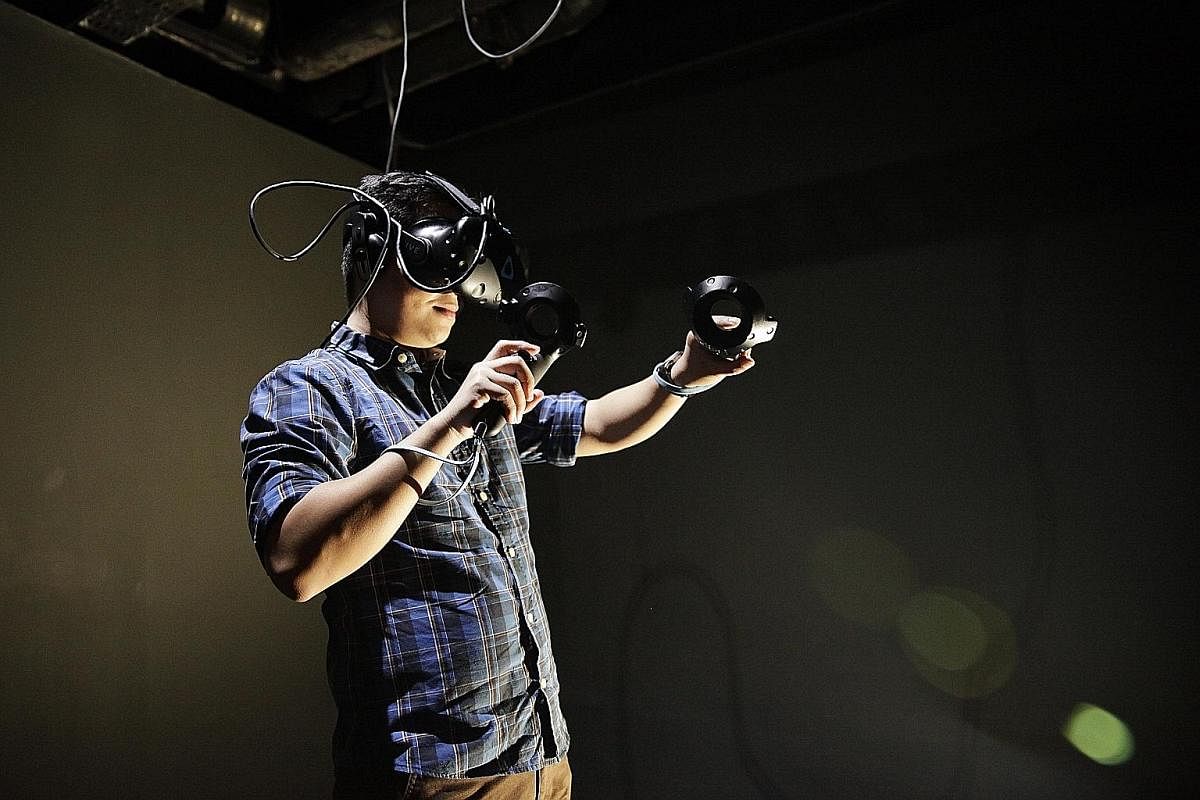The new breed of VR and AR arcades provide specialised equipment and proprietary games specially developed for bigger playing areas and teamplay.
Interest in such arcades has picked up rapidly, with curious onlookers gathering outside shops watching gear-loaded players react to invisible monsters and obstacles.
Zero Latency has had about 6,000 visitors since it opened here last November, according to Mr Simon Ogilvie, executive director of Tomorrow Entertainment, which brought the franchise to Singapore.
Virtual Room Singapore has had an average of 1,500 visitors a month since it opened last October, while Hado Singapore has seen "thousands" of gamers step through its doors in the same time period.
Video editor Eunice Wong, 29, had never played a VR game in her life, prior to joining a game at Virtual Room Singapore, but still found the experience intuitive and easy to pick up. "It was a good beginner's foray into VR," she says. "I like how the VR allowed you to sort of experience things like zero gravity and dinosaurs and the haptic technology immersed you in the various worlds."
But these entertainment options do not come cheap, as software licensing fees and hardware costs are quite high. A 30-minute session at Virtual Room Singapore starts at $44, while a 30-minute session at Zero Latency costs as much as a full-fledged video game at $69.
But Zero Latency's Mr Ogilvie describes the genre as the "business class of gaming" - priced at a premium, but offering people the chance to play games they cannot play at home or in arcades.
Ms Rebecca Assice, director of Virtual Room Singapore, says that while some players are initially hesitant about playing in VR for fear of motion sickness, many take to the experience minutes into the game.
As for Mr Jasper Tan, founder of company NexRealm, which brought the rights for Hado from Japan to Singapore, AR is a cheaper alternative to VR gaming, which he hopes will introduce more newcomers to the genre. "People really get into the games," he says. "We even have uncles coming to play and they're rolling on the floor (to dodge attacks)."
Virtual Room Singapore
Where: Level B3, Lucky Chinatown, 211 New Bridge Road
Admission: $44 a session (Mondays to Thursdays), $49 (Fridays to Sundays and public holidays)
Virtual Room Singapore takes the team-based collaboration of escape room games and elevates it to the virtual-reality (VR) realm, whereby teams of up to four players have to work together to solve puzzles and complete a mission.
You and your friends are time-travelling soldiers who have to visit ancient sites to right the wrongs of history and so find yourselves in ancient Egyptian tombs, the moon landing of 1969, the time of dinosaurs and more.
Each player gets his or her own room, but is able to see and interact with teammates in the virtual world. Players are given a HTC Vive VR headset and two controllers and will have to communicate with one another through microphones and headphones.



